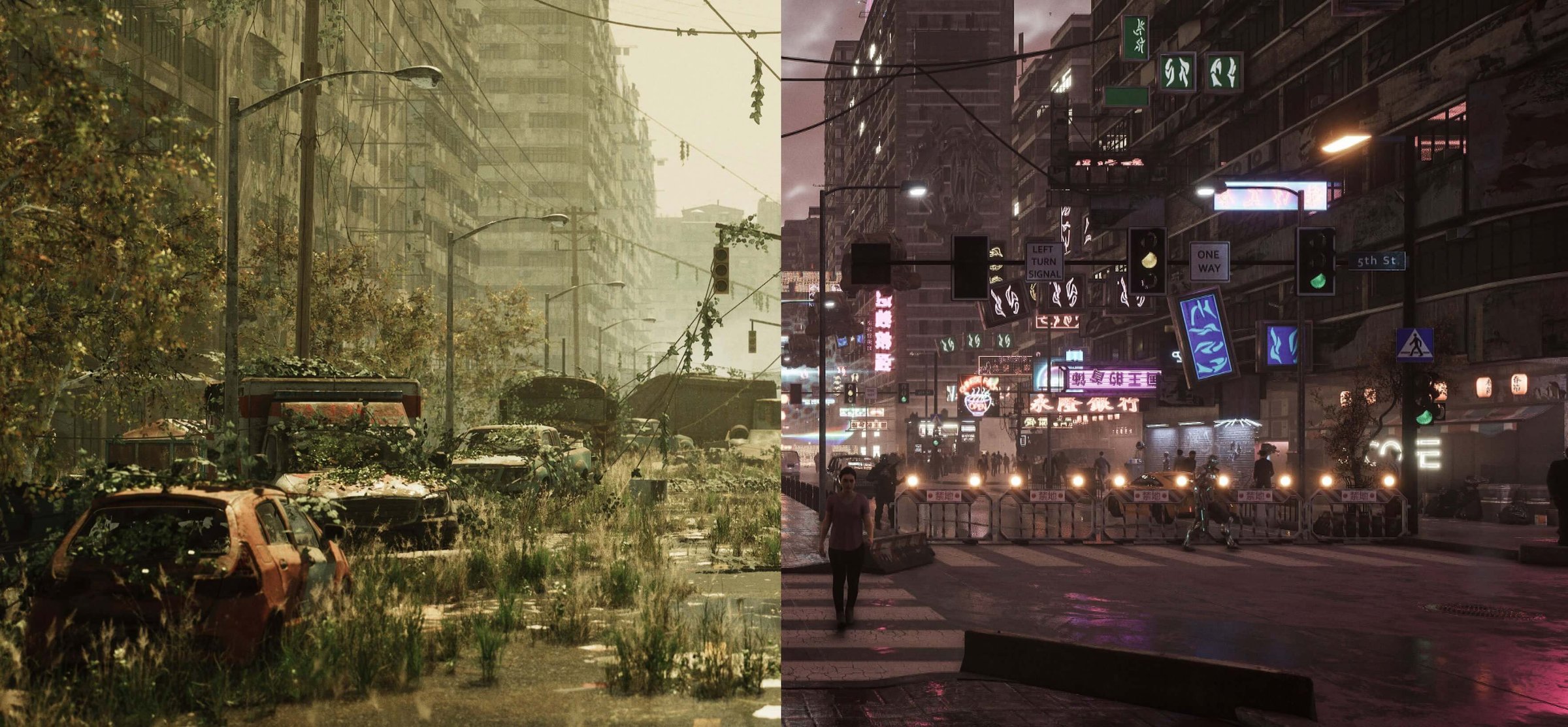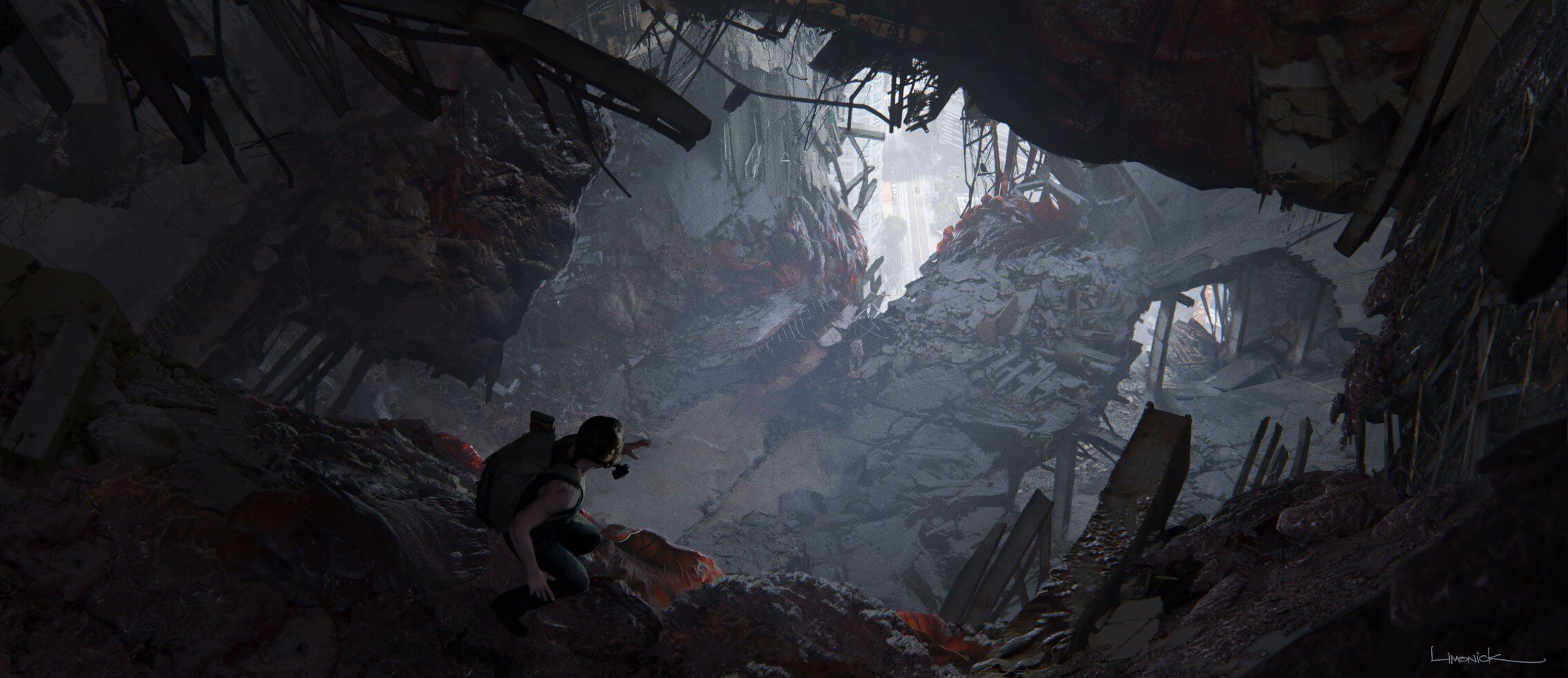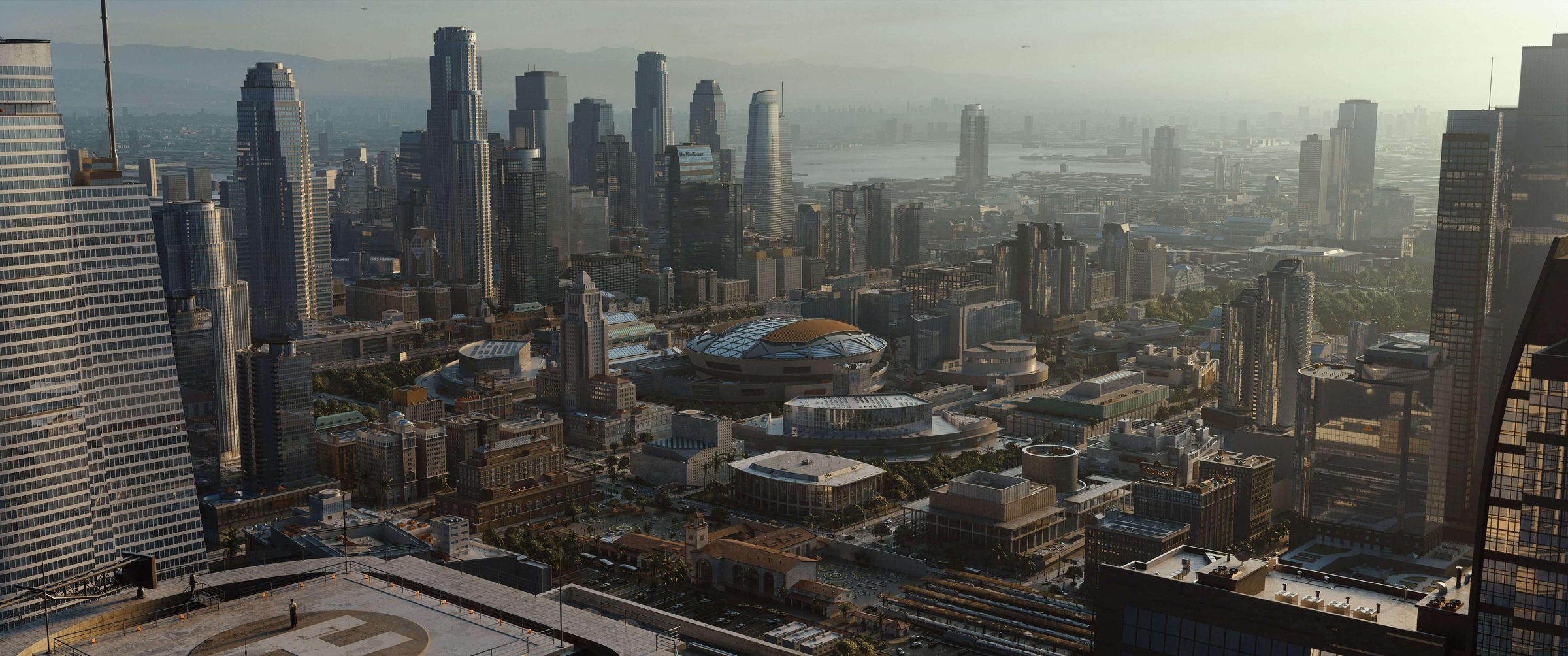How Pasquale Scionti Used ‘Future Slums’ to Create Virtual Environments
It wasn’t long ago that creating worlds from your imagination seemed far out of reach, but as technologies like Unreal Engine continue to advance, those childhood dreams are coming true. Today we’re pleased to be joined by Pasquale Scionti to discuss learning 3D, how he caught the attention of companies like Microsoft and Epic Games, and of course taking a stroll down the streets of two amazing scenes that he created in Unreal Engine with our Future Slums kit.
KitBash3D: Pasquale, before we chat more about these post-apocalyptic and cyberpunk lands, can you introduce yourself and share what has led up to you creating these real-time environments?
Pasquale: My name is Pasquale Scionti, and I am a Senior Environment & Lighting Artist based in Hamilton, Ontario, Canada with more than 15 years of professional experience in the Architectural Visualization Industry. I started out as an enthusiastic photographer and have always been interested in the latest technology. I self-taught myself into the world of 3D, and I’ve since worked in a number of countries and with several international clients.
I started my professional career around 13 years ago at a design furniture company in Milan, Italy, and my first job in the 3D industry was creating showrooms for living rooms and beds. I was a CGI Manager for a furniture company in Tampa, Florida creating photorealistic renders and animation.

Later, in 2019, I collaborated with Epic Games on their Archviz Sample Raytrace, which is a small apartment scene that’s set up for Unreal Engine users to learn photoreal techniques and reuse elements in their own work. I was responsible for leading the design work and composition on this scene, as well as the modeling, lighting, and texturing.
After this journey with Epic Games, I started to create less ArchViz scenes and focus more on gaming and environments. It makes me tell a story in a very cinematic way, creating my personal compositions and drawing on my photoreal and lighting experience. That is where I got attention from several film production and video game companies, and now I am working full-time for The Initiative, a Microsoft Xbox Game Studio, as Senior Environment & Lighting Artist.

KitBash3D: Congratulations on the accomplishments! Do you have a favorite memory from your 3D journey thus far?
Pasquale: My favorite memory working as an artist was when I opened Unreal Engine for the first time. It was version 4.11, released in 2016, and I closed it immediately. I thought it was too hard to learn and impossible for me to use. After some days, I reopened it to challenge my fears, began reading the documentation, and I started to get comfortable with the software. From that day on I never stopped learning.

KitBash3D: I love that. Learning a new software or skill isn’t always sunshine and rainbows, but in the end there are few things as fulfilling or satisfying as watching yourself progress. And you went from ‘nothing’ to making an official scene for Unreal! Very impressive! (And now that I’ve seen your ArchViz renders… I think I need to update my living room decor, haha).
It has been a delight to watch you seamlessly move from contemporary to fantasy and sci-fi environments. For your post-apocalyptic and cyberpunk worlds, we loved seeing how you incorporated the Future Slums kit into two very different scenes. Can you talk more about those projects and the story you hoped to convey with them?

Pasquale: Exploring with the Future Slums kit was a great way to create and experiment with several moods and different environments. The cyberpunk scene was inspired by Cyberpunk 2077 and Ghost in the Shell, but at first the scene started as a simple Hong Kong city block, and it flipped after bringing in more neon elements.

As for the post-apocalyptic scene, that one is inspired by The Last Of Us Part II. I wanted to have a dramatic mood and that’s how I came to inserting vines and brushed foliage and volumetric fog with warm yellow tones. The walking process was created with a virtual plugin using iPad Pro 11 as my main camera (see below).
KitBash3D: That is super cool – it really brings you into the scene! So how do you start off a project like this?
Pasquale: Before starting a project like this, I collect details and reference pictures. Not all of my scenes are from reference pictures per se; they are just what I envision in my head. I sketch as well, but I usually focus more on real pictures.
For the creation process, the first thing I do is use blocks in my scene to define the scale and composition. With that in place, I focus on the mood and lighting to achieve the desired look. I use volumetric fog in almost all of my scenes because it gives a great separation between the background and foreground.


KitBash3D: That separation is key to the realism, I imagine, since the fog mimics the dust and particulate matter that surrounds us in daily life. There’s so much more I’d like to ask about your other worlds on your YouTube channel, but for now we have time for one more question: what inspires you to keep creating these worlds or make art in general?
Pasquale: I make art because it is part of my life just like music. Art is an expression of my imagination that comes to life – and Unreal Engine enables me to create what I have in my mind.
KitBash3D: There’s no feeling like it, and I hope your story inspires more people to follow in your footsteps. Thanks for taking the time to share with us today, and we look forward to seeing many more of your virtual worlds!
About Pasquale Scionti

Pasquale Scionti is a Senior 3D ArchViz and Environment Lightning Specialist based in Hamilton, Ontario. He was born in Vancouver, Canada, lived in Tampa, Florida for two years and spent most of his life in Milan, Italy. With more than 15 years of professional experience in the Architectural Visualization Industry, Pasquale works with high attention to detail and realism to create the best visualization possible. You can keep up to date with his work on ArtStation, Instagram, and YouTube.




